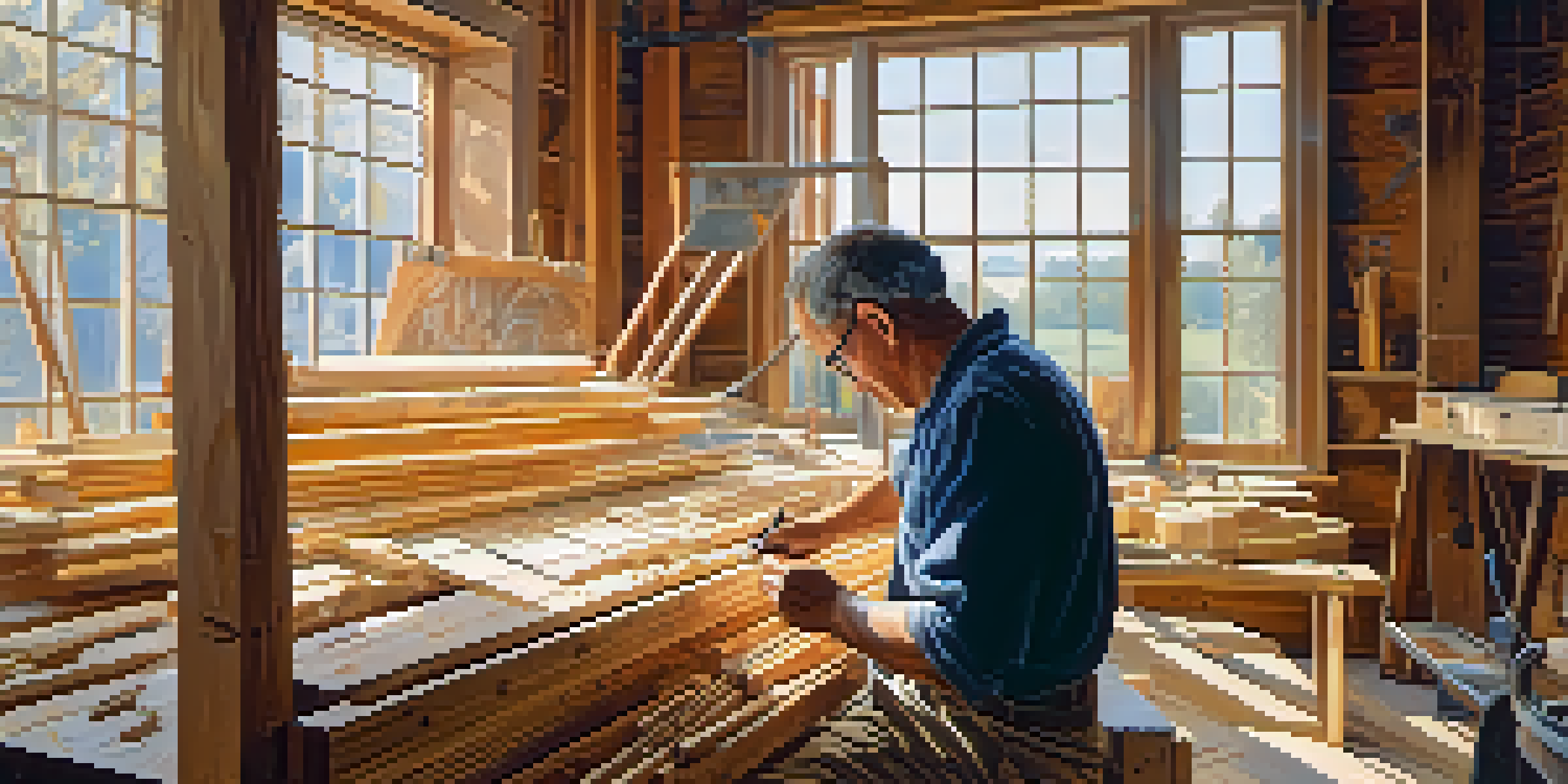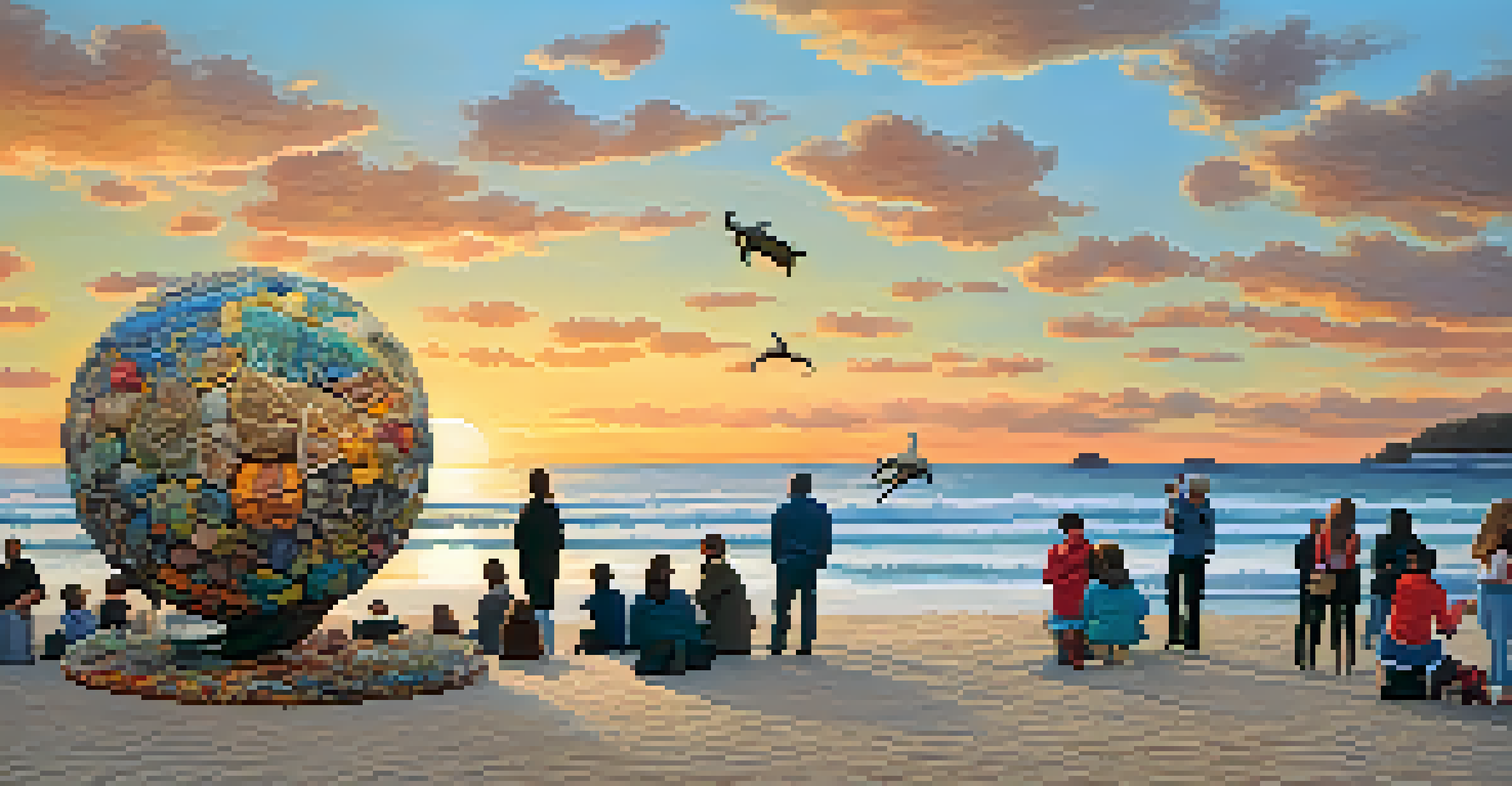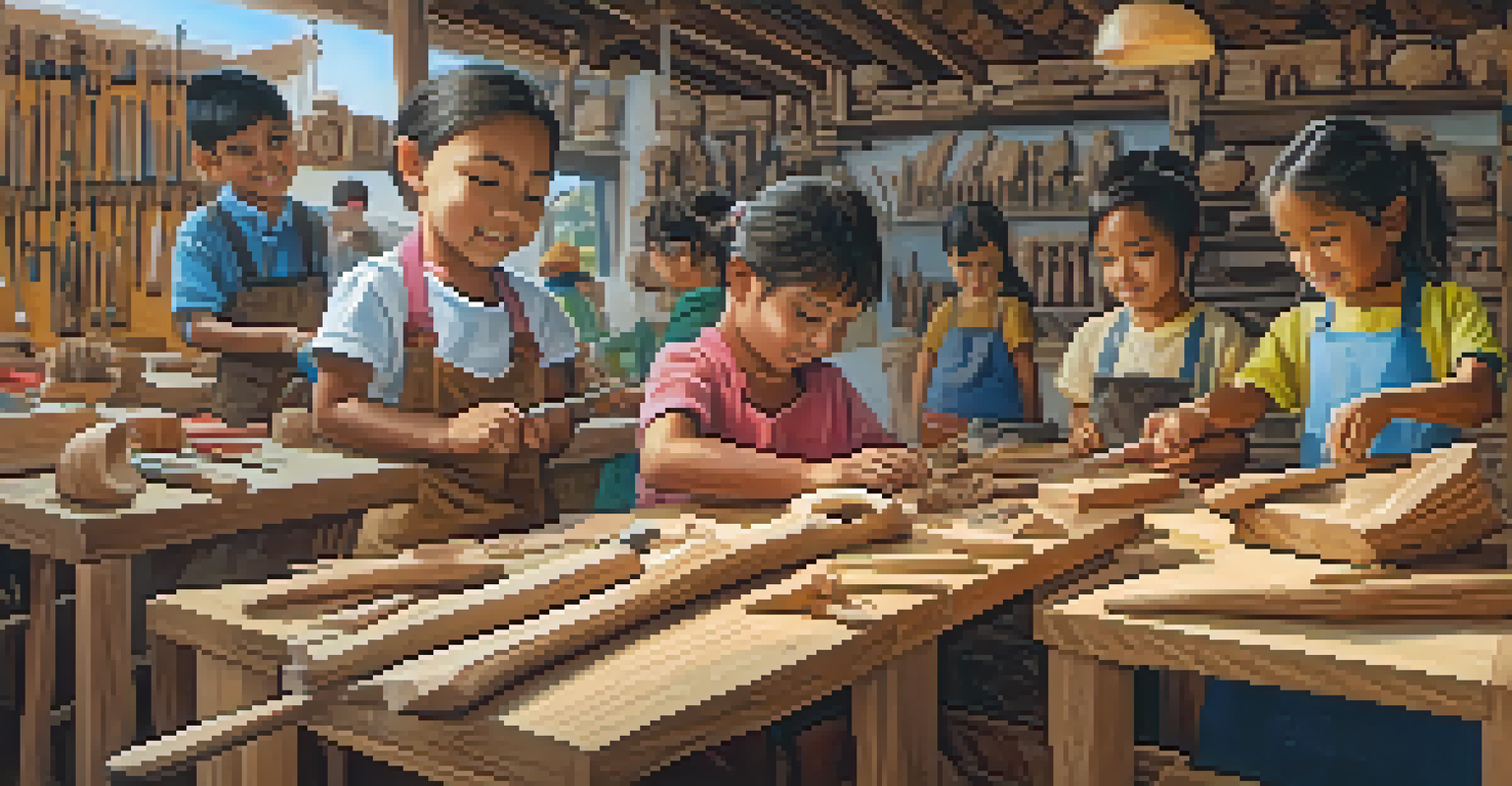Carving for Conservation: Art that Protects Our Planet

The Intersection of Art and Environmentalism
Art has long been a powerful tool for social change, and when combined with environmentalism, it can inspire profound action. Artists use their creativity to draw attention to pressing ecological issues, transforming public perception and instilling a sense of urgency. This blend of art and activism encourages us to reflect on our relationship with nature and motivates us to take steps towards conservation.
Art is not a mirror to reflect the world, but a hammer with which to shape it.
One striking example is the work of sculptors who incorporate recycled materials into their pieces, turning trash into treasure. These artworks often serve as a stark reminder of the waste we produce and its impact on our planet. By showcasing these materials in a new light, artists challenge us to reconsider consumption and embrace sustainability.
Ultimately, the intersection of art and environmentalism fosters a dialogue that resonates with diverse audiences. It invites us to engage with complex issues in a more personal and emotional way, creating a deeper connection to the planet and a stronger commitment to its protection.
The Role of Carving in Conservation Efforts
Carving, as a traditional art form, has unique potential in conservation efforts. Many artisans use locally sourced or reclaimed wood, which not only reduces waste but also supports sustainable forestry practices. By prioritizing sustainable materials, carvers contribute to the preservation of forests and ecosystems.

In addition to materials, carving techniques often reflect cultural traditions that emphasize harmony with nature. Many Indigenous artists, for instance, create pieces that tell stories of their relationship with the land, highlighting the importance of environmental stewardship. This cultural narrative reinforces the idea that protecting our planet is a shared responsibility.
Art Drives Environmental Awareness
Artists use their creativity to inspire action and foster a deeper connection to ecological issues.
Moreover, carved artworks can serve as powerful fundraising tools for conservation initiatives. Auctions and exhibitions featuring carved pieces often benefit environmental organizations, amplifying the impact of the artwork beyond its aesthetic value. This synergy between art and conservation creates a win-win scenario where creativity fuels meaningful change.
Art Exhibitions That Highlight Conservation Themes
Art exhibitions centered on conservation themes have gained popularity in recent years, attracting attention from both art enthusiasts and environmental advocates. These exhibitions often feature a diverse range of artists who explore topics like climate change, biodiversity, and habitat destruction. By showcasing these artworks in public spaces, organizers inspire conversations around these crucial issues.
The greatest threat to our planet is the belief that someone else will save it.
For instance, an exhibition might focus on ocean conservation and feature stunning sculptures of marine life created from ocean debris. Such displays not only captivate audiences but also educate them about the challenges facing our oceans. Visitors leave with a stronger understanding of the issues and are often motivated to get involved in conservation efforts.
These exhibitions serve as a platform for artists to share their messages and for audiences to engage with them. By making art accessible and relevant, they foster a community of individuals passionate about protecting the environment, creating a ripple effect of awareness and action.
The Importance of Community Involvement
Community involvement is vital in the realm of carving for conservation. Workshops and collaborative art projects can engage local communities in the creative process, allowing individuals to express their concerns about the environment through art. When people come together to create, they also build a sense of ownership and responsibility towards their surroundings.
In many cases, local artisans mentor community members, sharing skills and techniques while emphasizing the importance of sustainable practices. This mentorship not only preserves traditional carving methods but also instills a deeper appreciation for the natural resources being used. As participants learn to carve, they also learn to respect and care for the materials at hand.
Carving Promotes Sustainable Practices
Traditional carving techniques often utilize reclaimed materials, supporting conservation and cultural narratives.
Furthermore, community art projects can amplify messages of conservation. When a group collaborates on a piece that symbolizes their commitment to protecting the environment, it fosters unity and raises awareness on a larger scale. These collective efforts can lead to lasting change, inspiring others to join the movement.
Educational Initiatives Through Art and Carving
Educational initiatives that incorporate art and carving play a crucial role in raising awareness about environmental issues. Schools and organizations often host workshops where participants learn carving techniques while discussing topics like deforestation, climate change, and wildlife protection. This hands-on approach not only teaches valuable skills but also fosters a sense of responsibility towards the planet.
For example, a program might involve students carving sculptures from reclaimed wood, allowing them to explore their creativity while learning about sustainable practices. By tying art to environmental education, these initiatives help cultivate a generation of environmentally conscious individuals who appreciate the importance of conservation.
Additionally, these educational programs often culminate in public displays of the participants' work, further spreading awareness within the community. When others see the students' creations, it sparks curiosity and dialogue, amplifying the message of conservation and encouraging collective action.
The Future of Carving and Conservation
As we look to the future, the relationship between carving and conservation is poised to grow even stronger. With increasing awareness of environmental issues, more artists are using their platforms to advocate for sustainability and conservation. This trend not only elevates the importance of the art form but also amplifies the message of protecting our planet.
Emerging technologies, such as digital carving tools, are also altering the landscape of this art form. These innovations can help artists create intricate designs while minimizing waste, allowing for even more sustainable practices. As artists experiment with new materials and techniques, the possibilities for impactful conservation messaging expand.
Community Engagement Fuels Change
Collaborative art projects empower local communities to express environmental concerns and inspire collective action.
Ultimately, the future of carving for conservation hinges on collaboration and creativity. By uniting artists, conservationists, and communities, we can harness the power of art to inspire meaningful change and protect our planet for generations to come.
Inspiring Change Through Personal Stories
Personal stories often serve as the heart of the carving for conservation movement. When artists share their journeys—how they became passionate about the environment or the inspiration behind their work—it resonates deeply with audiences. These narratives create a connection that transforms art from mere aesthetics into a powerful call to action.
For instance, an artist might recount their childhood experiences in a forest that has since been threatened by development. By sharing their story, they not only raise awareness about the issue but also invite viewers to reflect on their relationship with nature. This emotional connection can be a catalyst for change, motivating individuals to take action.

As more artists share their personal stories, we witness a growing tapestry of experiences that highlight the urgency of conservation. Each narrative contributes to a broader understanding of the challenges our planet faces, encouraging collective action through empathy and inspiration.